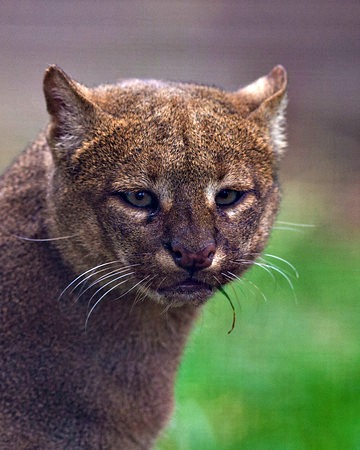 The Gulf Coast jaguarundi, a cat native to Mexico and the thornscrub habitat of southern Texas, today received a long-overdue “recovery plan,” a document outlining necessary steps to bring the species back from the brink of extinction.
The Gulf Coast jaguarundi, a cat native to Mexico and the thornscrub habitat of southern Texas, today received a long-overdue “recovery plan,” a document outlining necessary steps to bring the species back from the brink of extinction.
The U. S. Fish and Wildlife Service (Service) published the plan late yesterday, the result of a settlement agreement with WildEarth Guardians. Despite listing the Gulf Coast jaguarundi as “endangered” under the Endangered Species Act in 1976, the Service failed to designate critical habitat or write a recovery plan for the critically imperiled cat. Guardians challenged the Service’s failure to produce a recovery plan specific to the species in 2009. If the recovery plan is funded and followed, the Service predicts the species could be removed from the list of imperiled species in 2050.
“This recovery plan is a long overdue and important step to safeguarding rapidly disappearing jaguarundi habitat,” said Taylor Jones, Endangered Species Advocate for WildEarth Guardians. “These beautiful and rare cats waited nearly forty years for a path to recovery. We call on the Service to now fully and effectively implement the recovery plan and prevent this species’ extinction.”
The Gulf Coast jaguarundi is a subspecies of jaguarundi that historically ranged from the Lower Rio Grande Valley in southern Texas into the eastern portion of Mexico. The last confirmed sighting of this subspecies in the U.S. was in April of 1986. Most jaguarundi habitat in the U.S. is already lost to agriculture or urban development, including over 95% of thornscrub habitat in the Lower Rio Grande Valley. Jaguarundis need dense vegetation such as thornscrub to hunt prey, mainly small rodents, reptiles, and birds. Preservation of remaining habitat will also help other rare species, including the imperiled ocelot, that share jaguarundi habitat.
Development along the U.S./Mexico border also poses threats to the jaguarundi and many other border species. Barriers along the border destroy and fragment habitat, reduce access to habitat and resources, including food and water, and isolate wildlife populations. Approximately 70 miles of fence have been proposed in the Lower Rio Grande Valley, 56 miles of which are already constructed.
The recovery plan emphasizes identifying, protecting, restoring, and connecting potential habitat in southern Texas. The Service also intends to study the feasibility of reintroducing jaguarundi in Texas, as well as learn more about these elusive cats through population and habitat surveys.
Press Release: Wild Earth Guardians
[Note: The jaguarundi species is classed as Least Concern by the IUCN Red List. They range from the southern USA down through Central and South America to Argentina.]